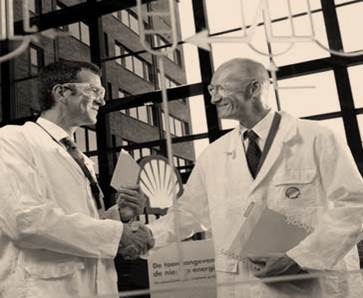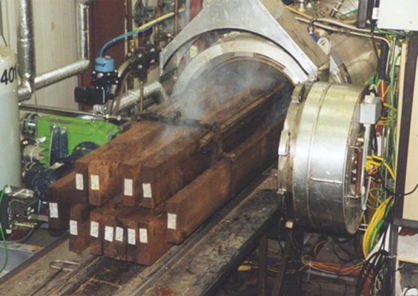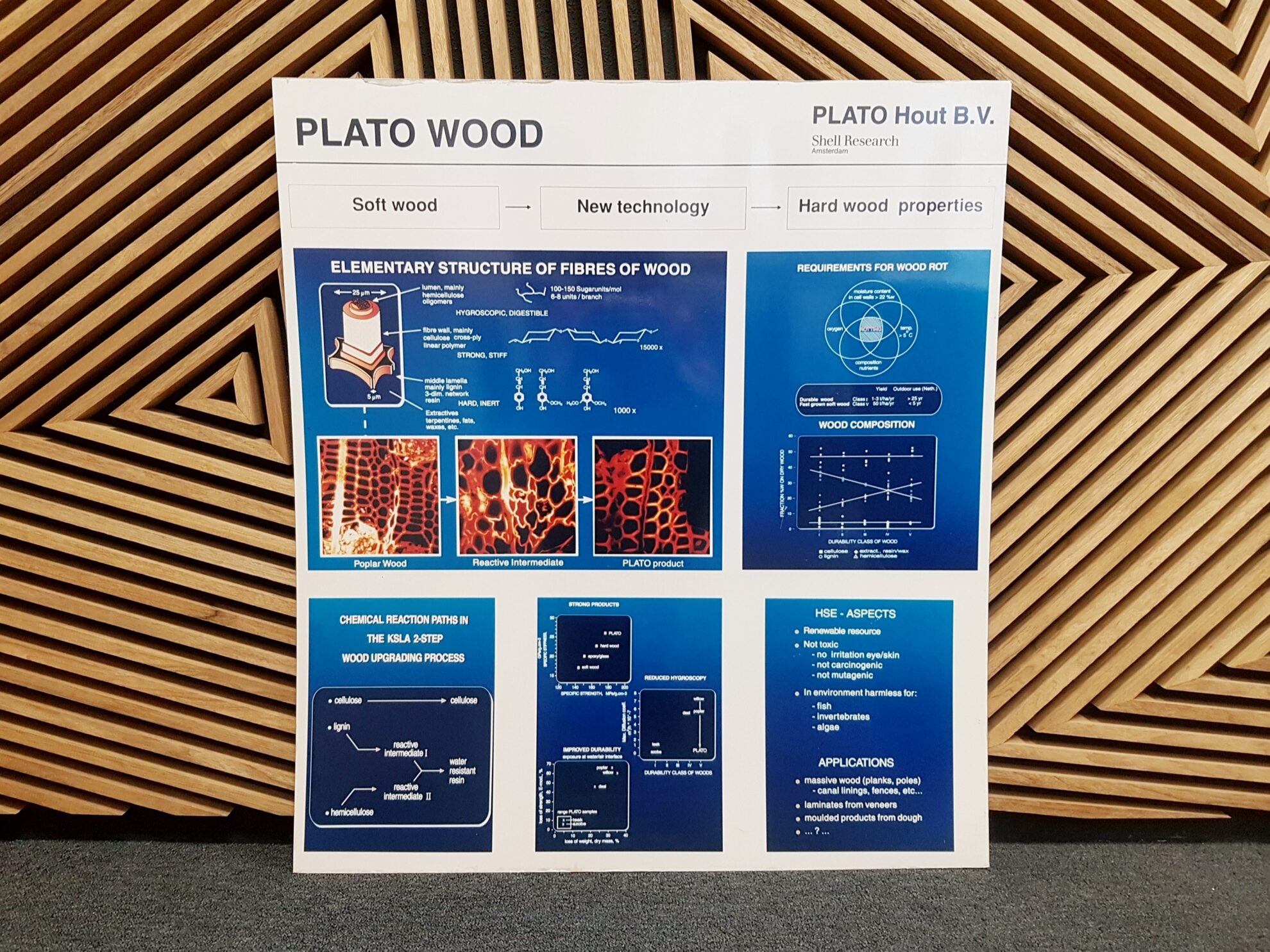A unique piece of Platowood history: this board from the mid-1990s illustrates the Platowood process. While the visual identity of Platowood has evolved over time, the process itself has remained virtually unchanged — apart from a few improvements.
Shell Research
Platowood’s origins go back to 1972, when Shell Research — during the oil crisis — began studying how to extract oil from wood. The project was codenamed PLATO, short for Providing Lasting Advanced Timber Option.
Shell researcher Herman Ruyter suspected that the process could make wood rot-resistant. In 1989, he was the first to describe what is now known as the hydrothermal modification process in a scientific publication.
When Shell discontinued the PLATO project in 1994, Ruyter and two other Shell managers acquired the patents for the process. The company Platowood was founded, and an experimental factory was opened in Wageningen.


Over 25 Years of experience
In 2000, Platowood launched a production facility at Industriepark Kleefse Waard (IPKW) in Arnhem. To this day, Platowood serves a wide range of national and international clients from this location, all choosing a circular, high-quality, and aesthetically refined wood product.
Platonising: A unique, patented process
Fast-growing wood species from certified forests go through a patented and refined process before leaving the factory as Platowood. Unlike other methods, which often involve only drying and heating (sometimes up to 200–230°C), the Platowood process consists of three distinct steps: steaming, drying, and baking. During these steps, new stable chemical bonds are formed within the wood.
